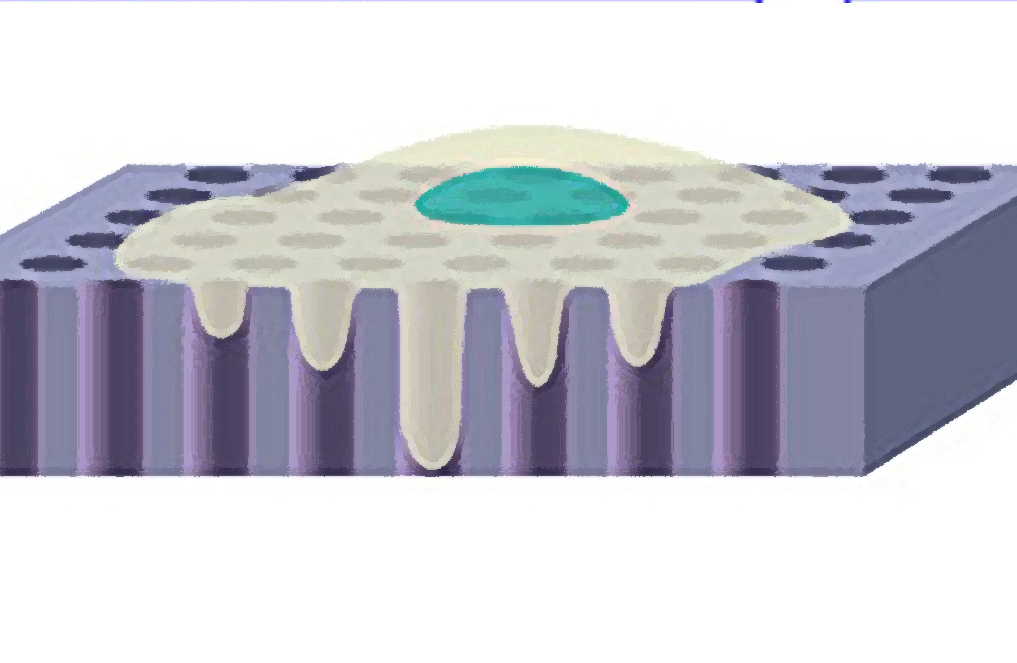How deep can a cell sense
NUS researchers discovered that mechanical cues from the porous microenvironment of the bone matrix could affect the proliferation of cancer cells.
Our bone is one of the main secondary locations for breast cancer metastasis. The architecture of the bone constantly undergoes remodelling as new bone mass is formed while other parts of it are absorbed. Cancer progression happens within this dynamic environment but it is not clear how the topographic cues induced by the porous bone matrix affects the spread and growth of cancer cells.
An interdisciplinary team led by Prof LOW Boon Chuan from the Department of Biological Sciences, NUS, together with Prof LIM Chwee Teck from the Department of Biomedical Engineering, NUS and their Ph.D. student, Parthiv Kant CHAUDHURI from the Mechanobiology Institute, NUS found that the topographical features on the bone structure can influence the rate at which cancer cells proliferate.
The researchers found that breast cells send out finger-like protrusions which can sense the difference in the bone matrix depth. At a certain depth, both healthy and malignant breast cancer cells were found to halt their proliferation. Further investigation into the mechanism behind the inhibition of cancer cell proliferation showed that the cytoskeleton of healthy and malignant cells use different signalling mechanisms in response to the depth sensing cues provided by the bone matrix.
These findings suggest that the use of growth inhibitory depth sensing cues could potentially lead to novel strategies that can selectively target and halt the spread of cancer cells in new areas of the body.
Prof Low said, “Cancer cells sense the depth of the microenvironment through unique cellular structures and signalling mechanism in order to thrive. Understanding how this adaptation works could offer us a new avenue to inhibit their growth and possible spread.”

Figure illustrates that cancer cells can sense the depth of the porous bone matrix using finger-like protrusions. [Reproduced with permission from ACS Nano]
Reference
Chaudhuri PK; Pan CQ; Low BC*; Lim CT*, “Differential Depth Sensing Reduces Cancer Cell Proliferation via Rho-Rac-Regulated Invadopodia” ACS NANO Volume: 11 Issue: 7 Pages: 7336-7348 DOI: 10.1021/acsnano.7b03452 Published: 2017.
Related article
